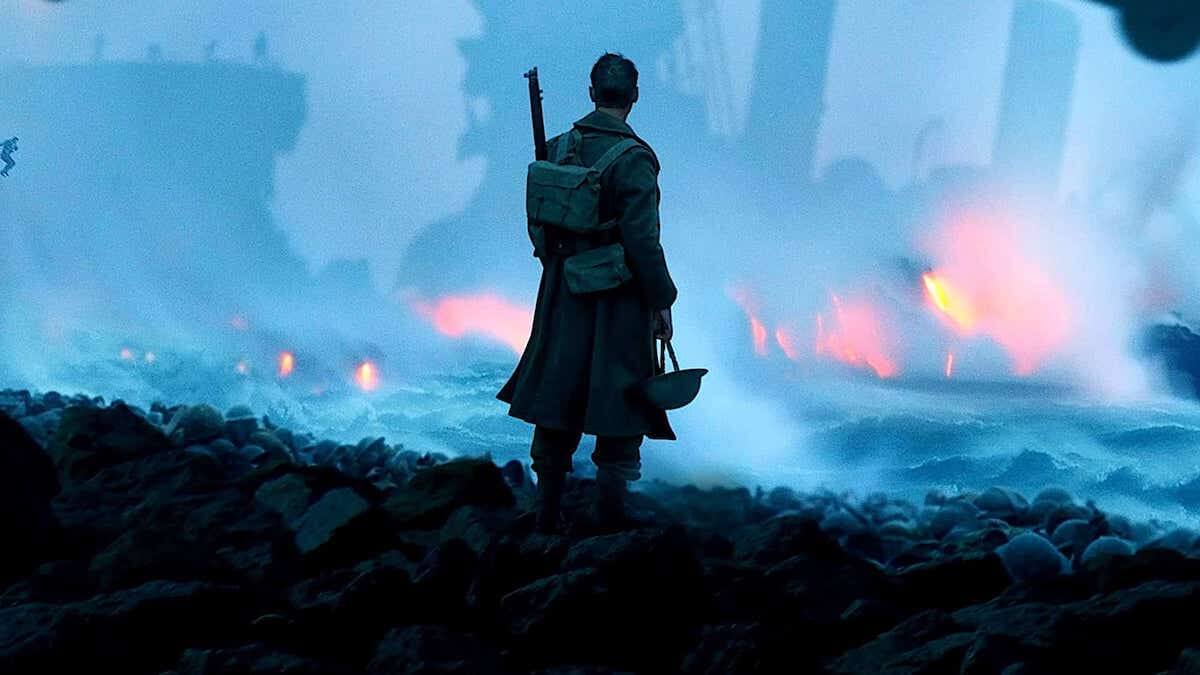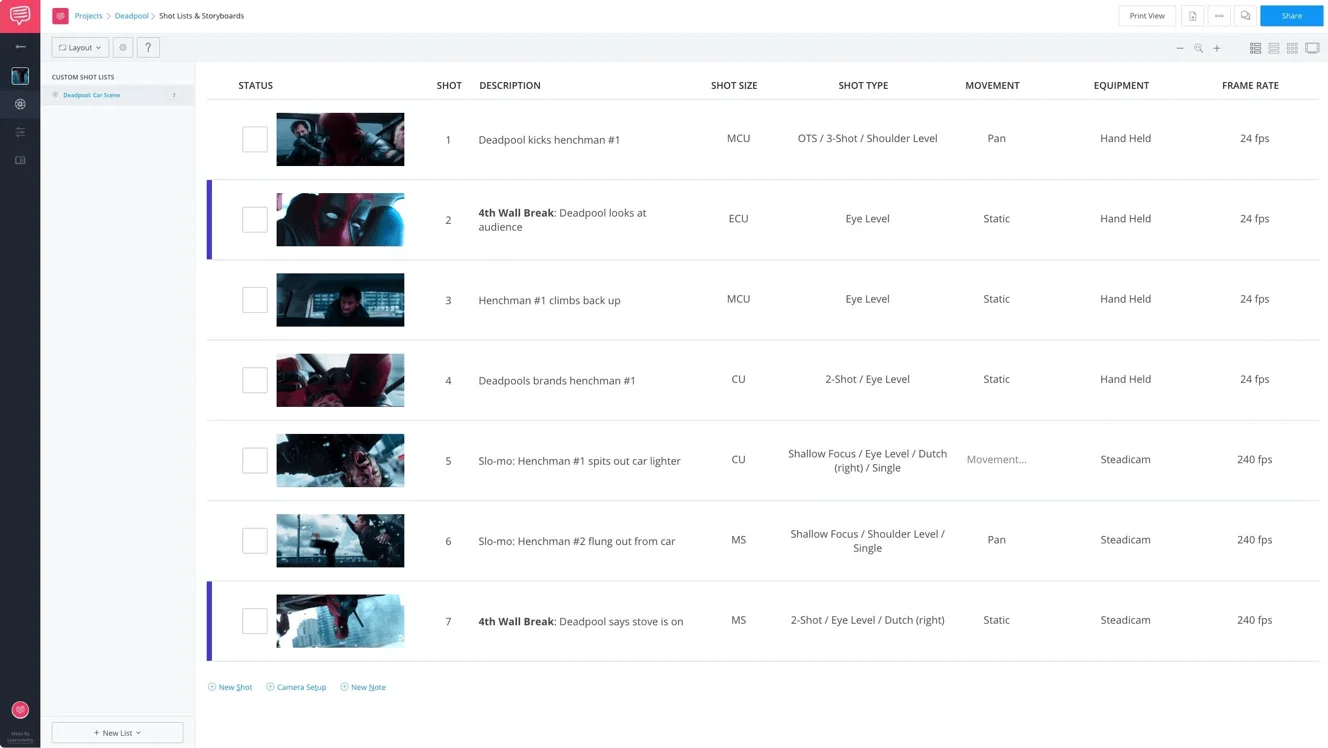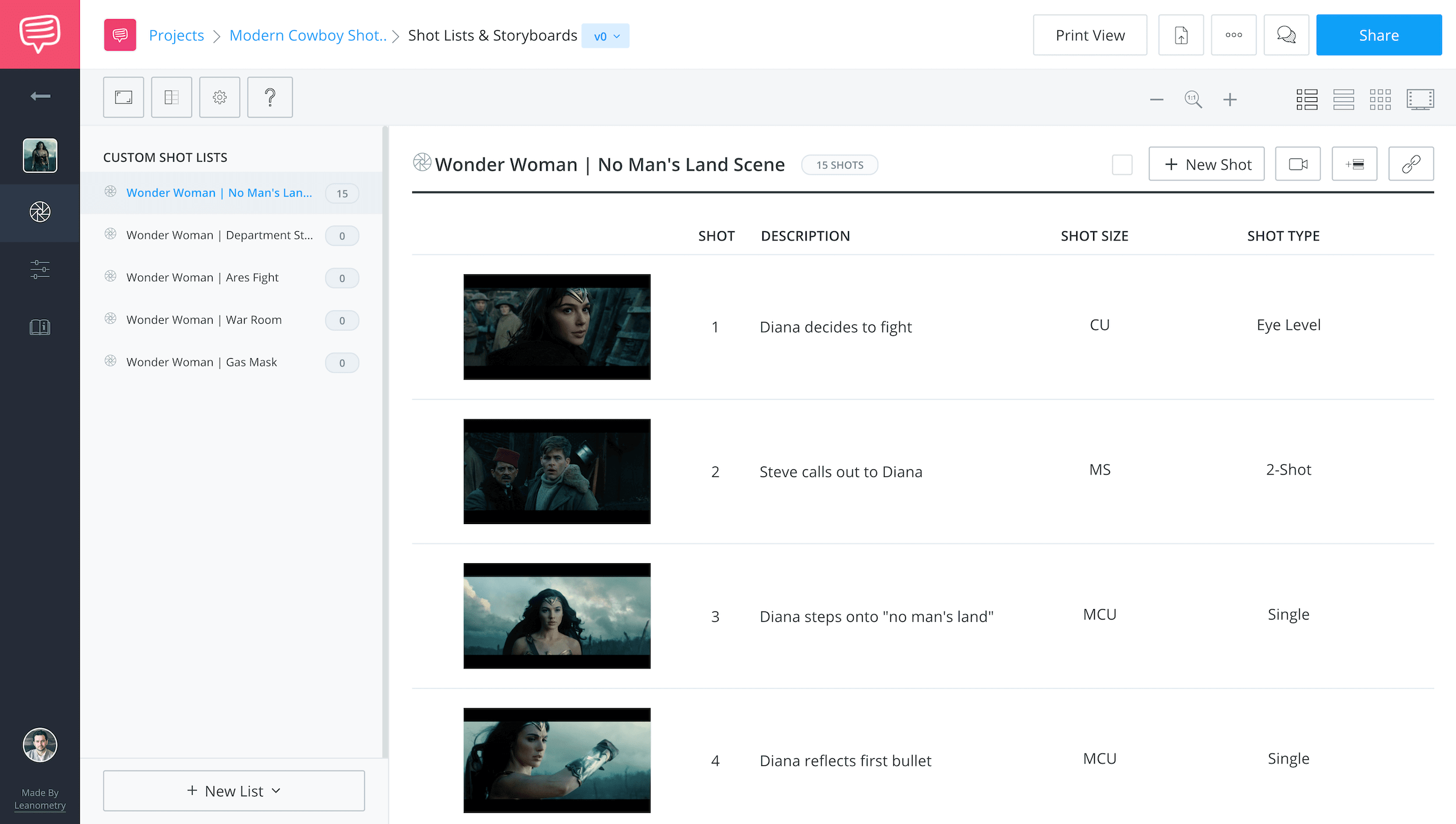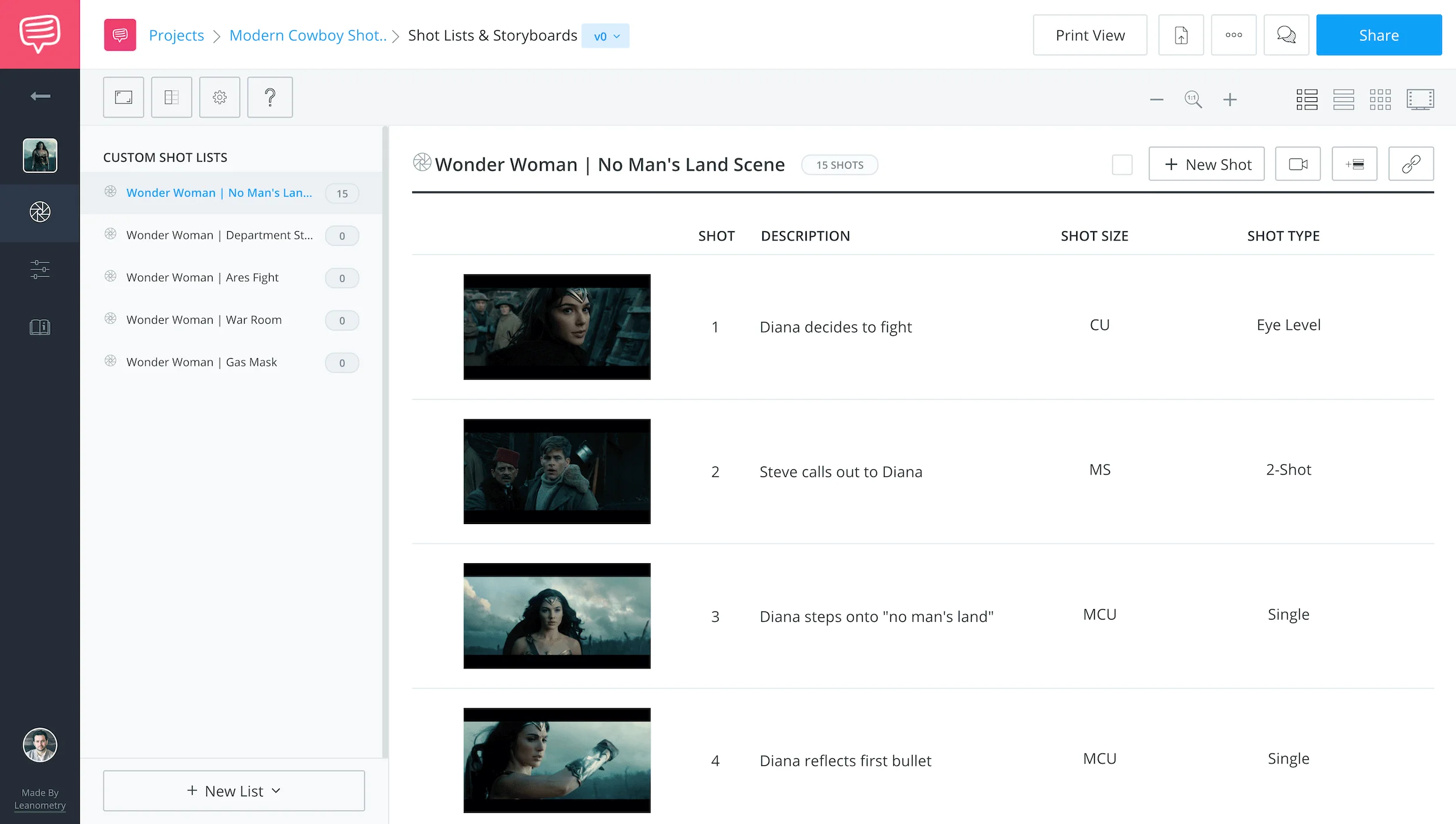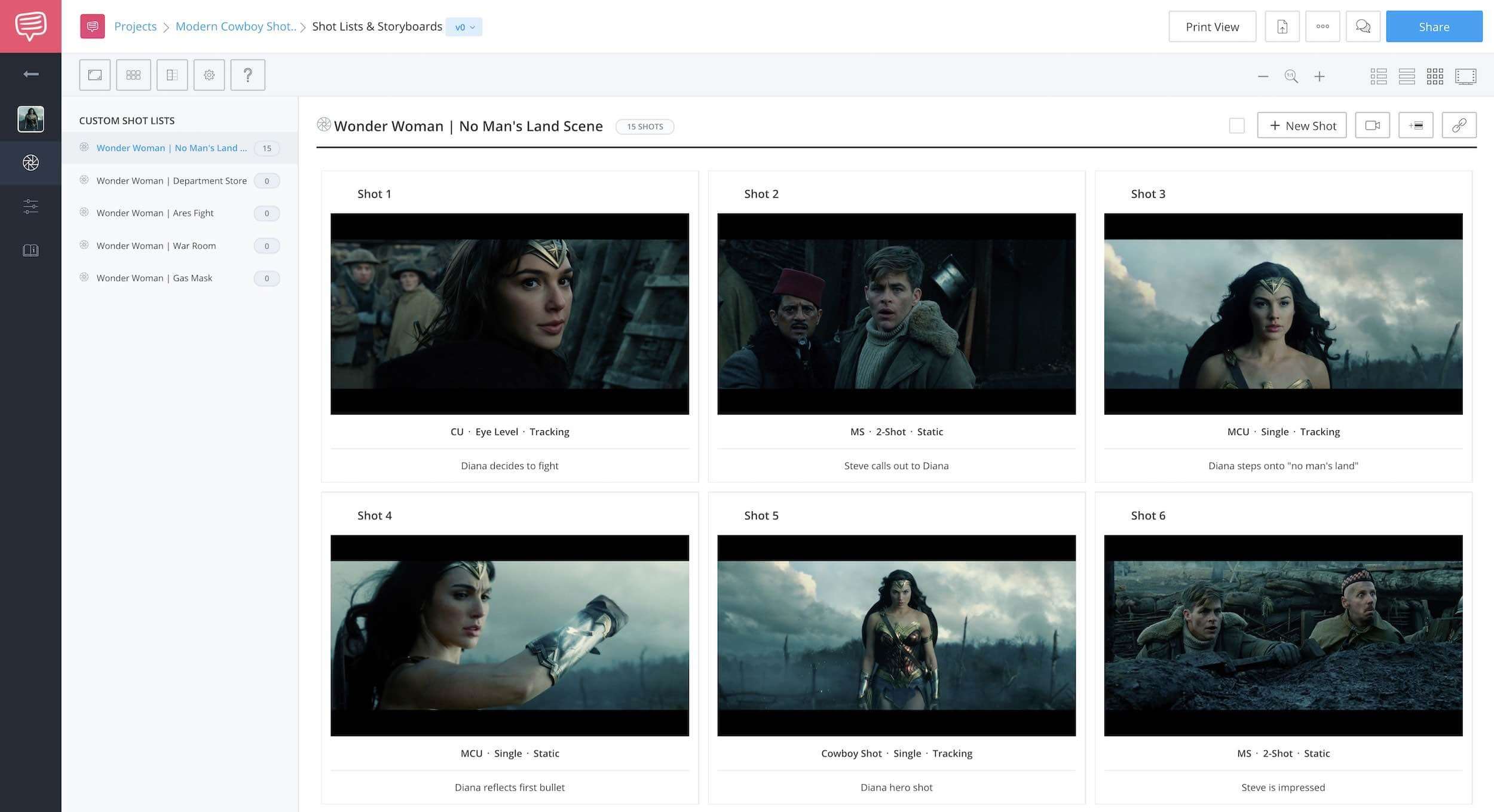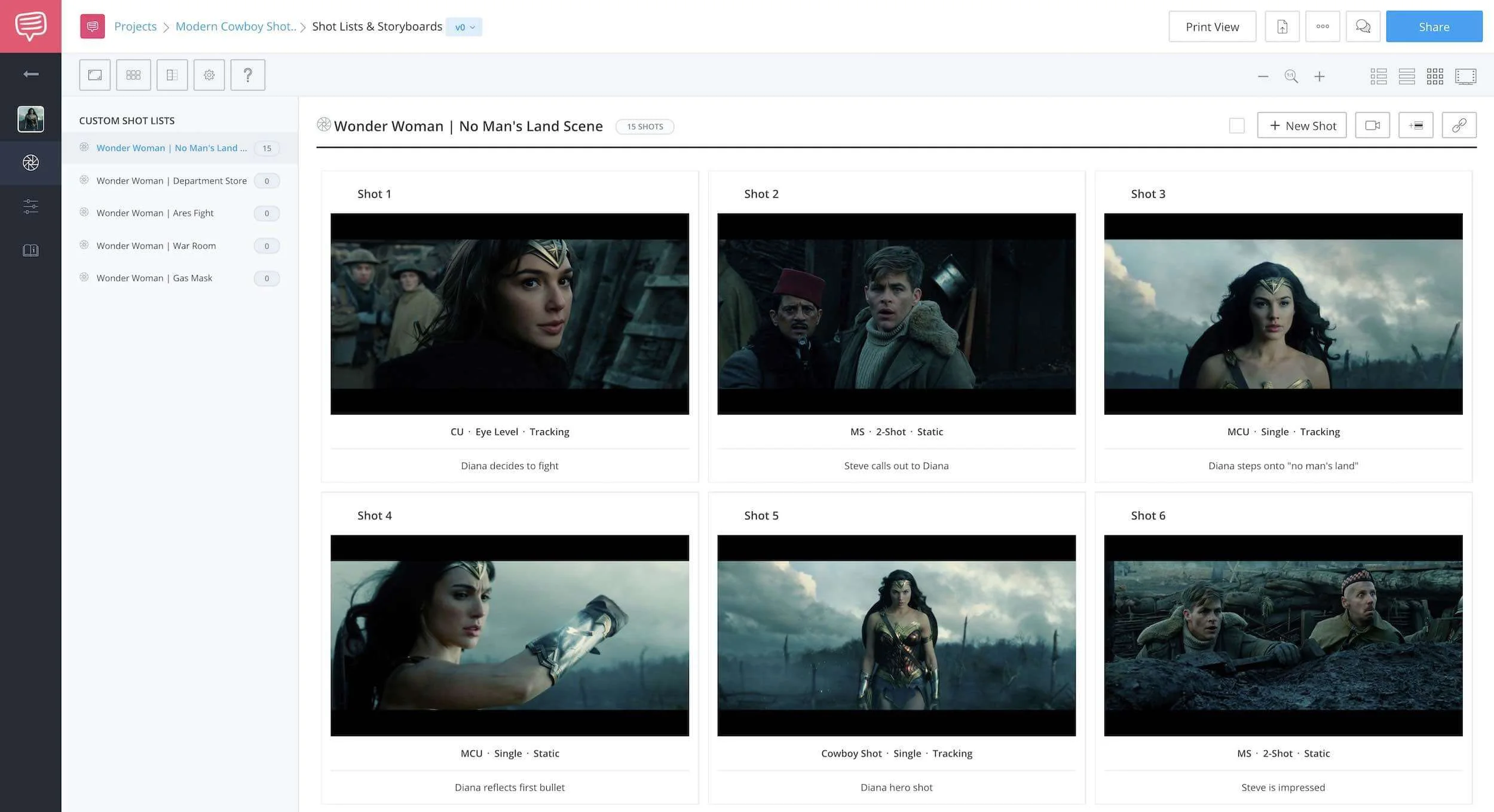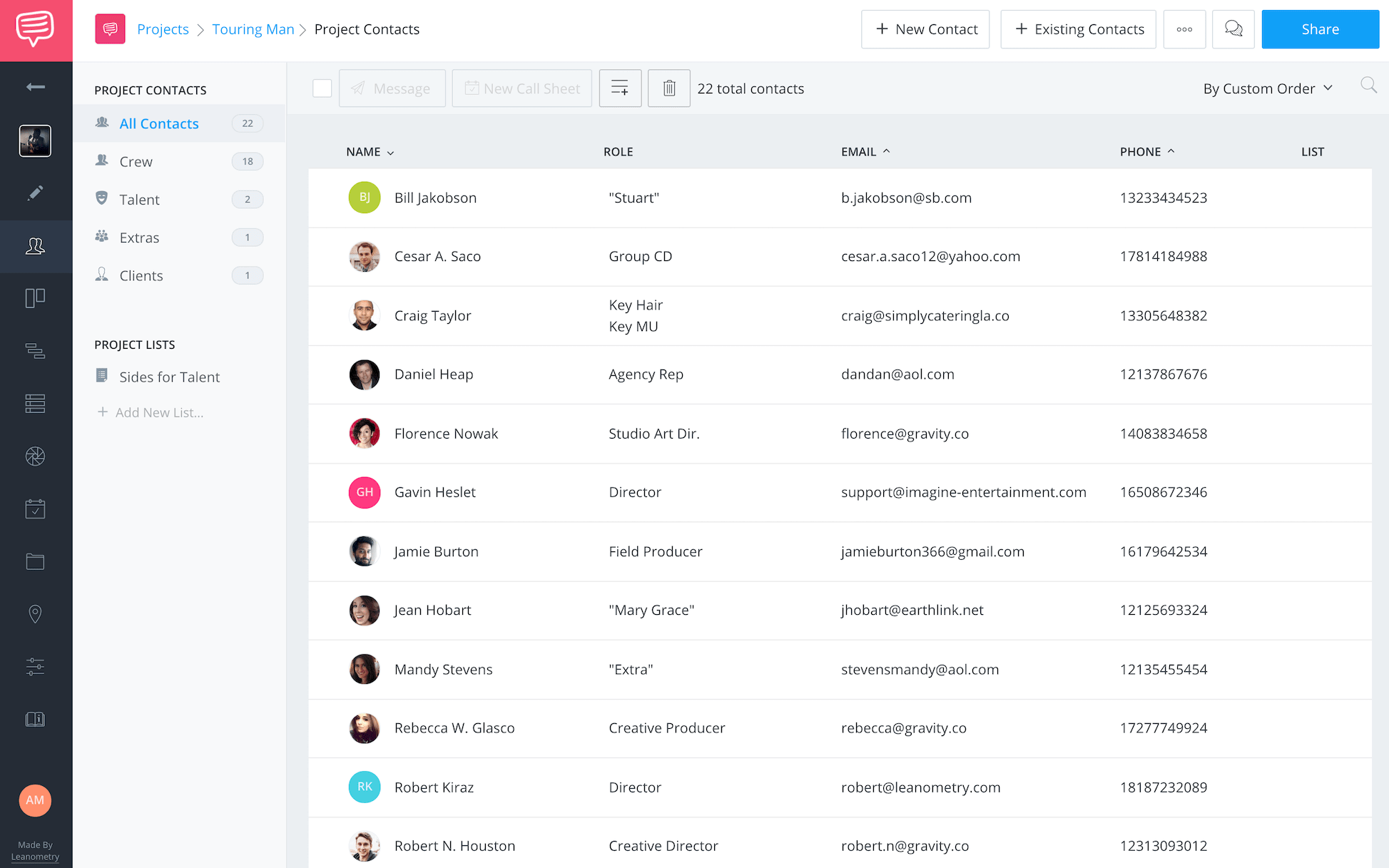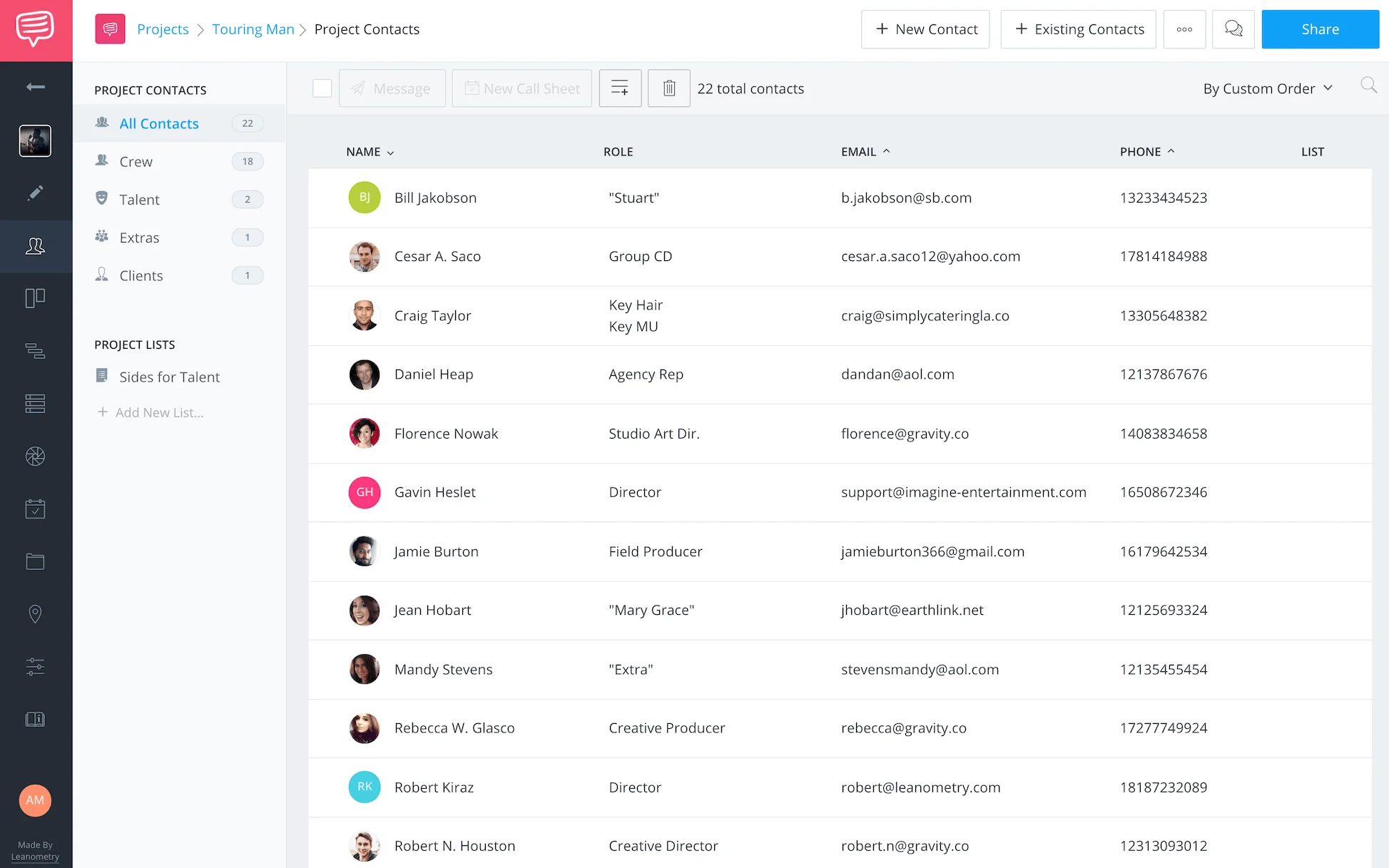Cinematography can mean a lot of things, but its ultimately about capturing your desired images. Communicating the various techniques used to capture these images is what separates a working professional and a student.
We’ll provide a list of professional cinematography terms and techniques used in the entertainment industry to help you move forward with your creative vision.
Let’s jump in!
Watch: How Roger Deakins Learned to Light
1
Opening Shots
GETTING STARTED AS A DP
what is cinematography?
Cinematography definition
Technically, cinematography is the art and the science of recording light either electronically onto an image sensor or chemically onto film stock.
Functionally, cinematography is understood to encapsulate everything having to do with the camera — its movement, the images, the light it receives, etc.
Learn more on the art of cinematography.
Cinematographer Definition
What does a cinematographer do?
A cinematographer or director of photography (shortened to DP or DoP) is the crew chief that presides over the camera and light crews on a film or video production. They usually get involved throughout the entire production lifecycle and liaise closely with the director to create the images you see onscreen.
So what exactly does a cinematographer do?
- Dissect the screenplay
- Research film techniques and cinematic techniques that relate to the subject matter and elicit the intended emotional responses from an audience.
- Creates shot lists, floor plans, and lighting diagrams
- Manages the camera and light crews
- Make decisions about cinematic elements such as lenses, filters, lights, and other camera/lighting requirements.
- Responsible for making decisions about aspect ratio, digital effects, image contrast, and frame rates.
- Make decisions about camera movements and film lighting techniques to prompt a specific emotional responses from an audience.
- Often liaises with the director and colorist during the color-grading phase on a project
That’s the job of the cinematographer in a nutshell. As we move forward through these 30 best cinematography techniques and tips, let’s keep in mind what the real aim of the job always is: telling a story visually.
2
PROFESSIONAL ADVICE
CREATING INSPIRED WORK
cinematography technique
Think outside the box
When Stanley Kubrick set out to film Barry Lyndon, he and his longtime cinematographer John Alcott wanted to break new ground and needed to develop new cinematography techniques.
They wanted to shoot the entire film with natural light. A pretty daring and ambitious film lighting idea. For an indoor candle-lit scene, they wanted to ACTUALLY film by candlelight.
This would have pushed the film stock of the era too far. So Kubrick and Alcott borrowed a special lens made by NASA to complete their scene.
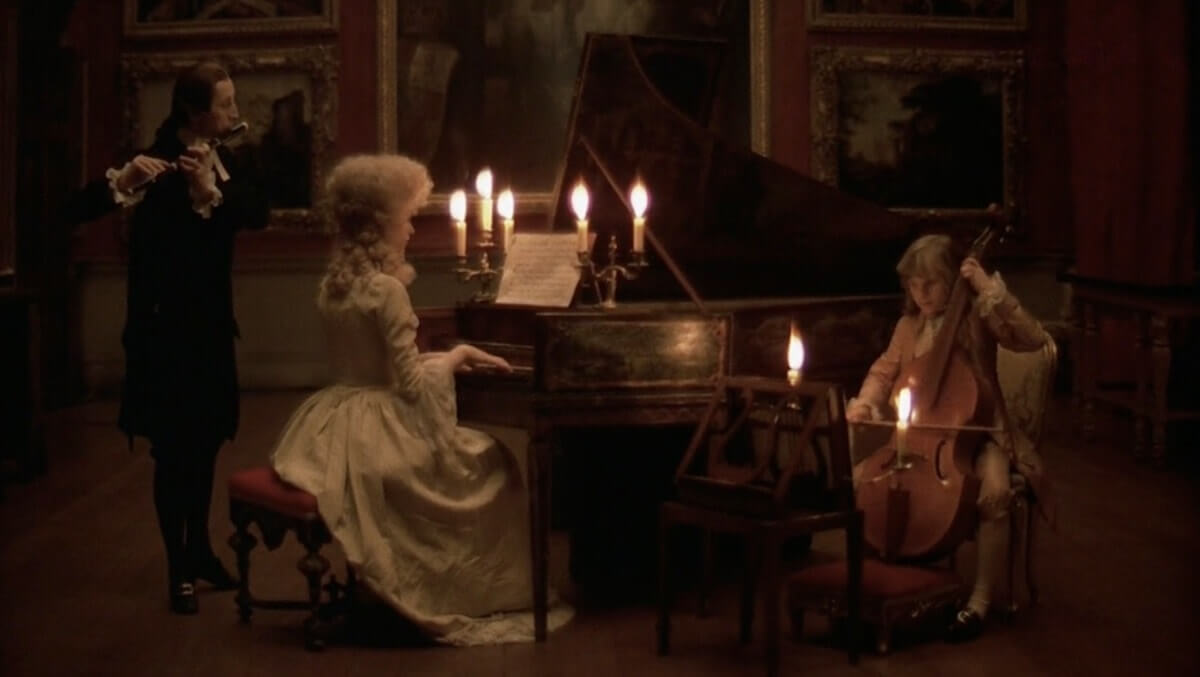


Cinematography Example: Unique camera techniques were used to create this stunning shot
The result of this solution is nothing short of painterly.
Finding the next great camera technique may just be a matter of devising a creative solution to achieve your visual goals but it also requires detailed strategies that will help you and your team build the shots you need.
One helpful tool is using a shot list to communicate your creative goals:
Deadpool Shot List Made in StudioBinder
With shot lists you can describe each shot in detail, label shot size, camera movements, frame rates, and any other required details that help your shots.
CINEMATOGRAPHY TECHNIQUE
Story over spectacle
Who are we to argue with Roger Deakins, one of the greatest cinematographers of all time?
“There’s nothing worse than an ostentatious shot or some lighting that draws attention to itself, and you might go, ‘Oh, wow, that’s spectacular.’ Or that spectacular shot, a big crane move, or something. But it’s not necessarily right for the film — you jump out, you think about the surface, and you don’t stay in there with the characters and the story.”
— Roger Deakins
Remember you are always telling a story. A visual story, yes, but a story all the same. That means not getting too preoccupied with developing a distinct "cinematic style" and instead focus on story.
The irony: Doing that will unveil your own unique voice, just like it did for Deakins. Here's a video we put together with priceless insight into Roger Deakins cinematography.
Roger Deakins Cinematography Style • Subscribe on YouTube
Recently, Deakins completed one of his most ambitious projects to date, 1917. Not only did he bring his typical control of light and shadow, he added mastery of the long take and tracking shots to his already stellar resume. Watch Deakins share his advice and cinematography techniques for 1917:
Watch: How Roger Deakins Shot 1917
Some of the best cinematography ever became practically invisible in its service of the story. Gordon Willis, the genius director of photography behind moody Oscar winning classics like The Godfather and Manhattan, took a very different approach to All The President’s Men.
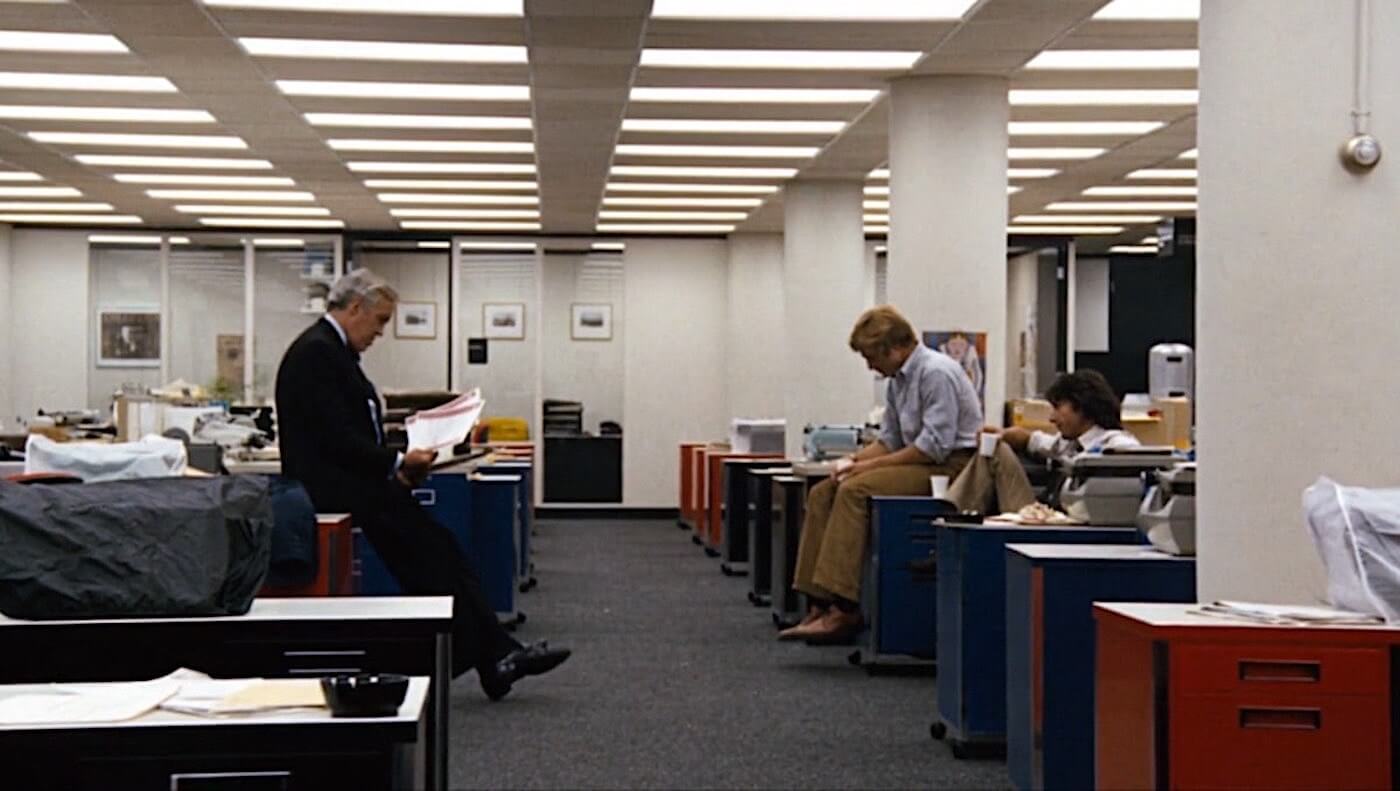


DP Gordon Willis used light to show that in the newsroom, light would uncover the truth
Perhaps the greatest cinematography technique you have will be your ability to recognize what will serve the story.
CINEMATOGRAPHY TECHNIQUE
Study great cinematography
Remember to stay inspired. Study great cinematographers.
Even the greats studied the greats.
When asked how he made Citizen Kane Orson Welles said “John Ford, John Ford, and John Ford.”
This was in reference to Ford’s own classic Stagecoach, which pioneered not just the western (no pun intended), but some of the dramatic chiaroscuro film lighting and camera technique.
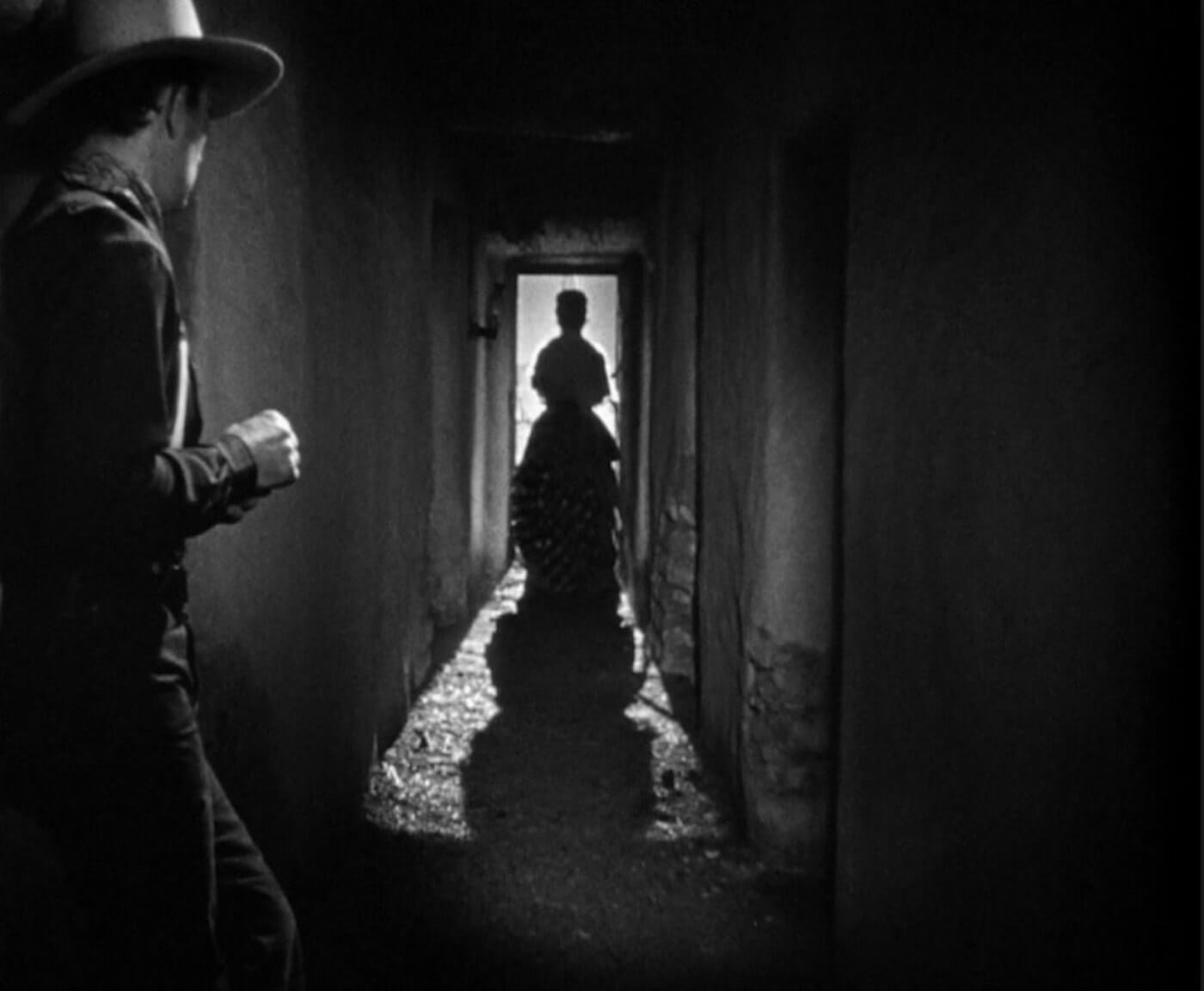


John Ford’s cinematic technique in Stagecoach had a big influence on a then young Orson Welles
It’s safe to say Orson Welles considered Ford’s work to employ some of the best cinematography techniques ever. Ford's great cinematography was so powerful for Welles that it led him to to create his own all time classic.
And groundbreaking film lighting techniques.
Free Downloadable Bonus
Download FREE Cinematography Techniques Cheatsheet
This article took 30 hours to write. Thirty! Needless to say, there was a LOT we couldn’t include in the post. Download our FREE, printable cheatsheet PDF to get access to over 30+ cinematography tips (includes bonus content not in the post).
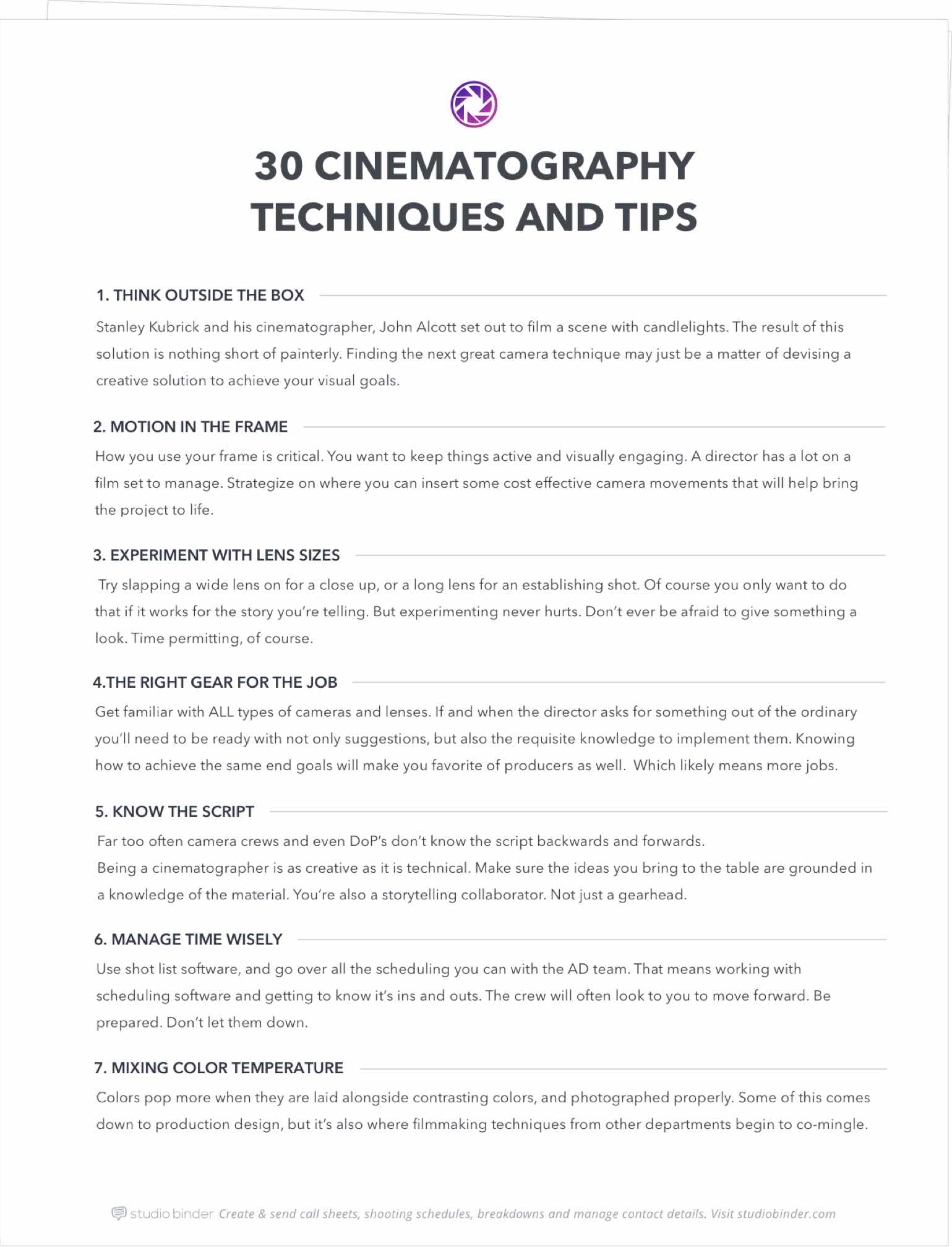
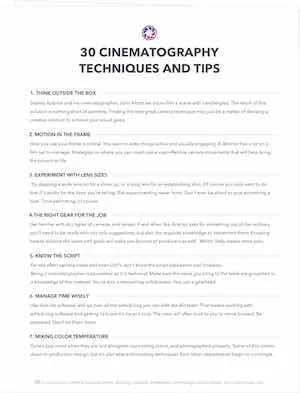

CINEMATOGRAPHY TECHNIQUE
Manage your time effectively
The camera and lighting crew is often the biggest crew on a film set.
You are going to be interacting with all of those department heads, and you are directly (or indirectly) in charge of all of them and their work.
This means always having a plan and executing it. Which means having and respecting storyboards and a shot list. Using the proper tools are cinematography techniques unto themselves.
Why?
You will ALWAYS be under the gun for time. Just like money, there is never enough.
The 1st AD will be asking how low until picture is up constantly. Because the Producers will be asking HIM how long until picture is up constantly.
So before you even step on set, know the coverage. Know the set-ups. Know the lighting plans. Know it all backwards and forwards and how you’ll move efficiently between them.
In film school you probably learned how to light.
But did you learn how to light fast? Or how to efficiently adjust when daylight is almost gone? When you might not make the day and you feel the the entire production waiting as you get a little fill on the lead actress?
Be ready.
But how?
Be prepared.
The crew will often look to you to move forward. Don’t let them down.
Use shot list software to know the ins and outs of every shot. In the video below, DP and ShareGrid cofounder, Brent Barbano, walks us through his process of creating a professional shot list.
It doesn't stop with the shot list. The shooting schedule is just as critical. Communicate with your AD so you can prioritize the order you'll be shooting which scenes. That means working with film scheduling software and seeing how logistics will affect everything you do.
Here's Brent Barbano how cinematographers should work ADs to understand the shooting schedule:
CINEMATOGRAPHY TECHNIQUE
Be an artist (but a reasonable one)
While you shouldn’t get too precious with your work, and alway serve the story, be versed in visual art and design terminology.
It can be great shorthand with your Director and Production Designer, as well as others.
Time is of the essence and great cinematography need not be painstaking. At the same time, treat your shots, and each frame, like a work of art you want to get right.
Even if you’re doing it on the fly, make sure your framing works from a purely visual standpoint. There are many excellent camera techniques you can implement to achieve this.
Take some time to familiarize yourself with great artwork. The tools of creating powerful images may have changed, but the basic principles have remained the same for hundreds of years.
CINEMATOGRAPHY TECHNIQUE
Take creative chances
Push yourself creatively.
We touched on this a bit in other cinematography techniques, but emphasis never hurt.
The overall idea here is to emphasize that taking risks can pay off. If they are calculated ones that you run by others.
Don’t be afraid to break some of those rules that instructors drilled into heads. Dogmatic cinematography techniques can be detrimental to innovation. Some rules were made to be broken.
Plus...
Playing it safe leads to getting into the habit of average/mundane shooting.
Your best cinematography might appear when you think out of the box.
Pick your spots, of course. If you get too crazy all the time you might have some issues staying employed.
3
Master Pre Production
IT ALL STARTS WITH PREPARATION
CINEMATOGRAPHY TECHNIQUE
Know the script
Seems like another ‘no brainer’.
But...
Far too often camera crews and even DoP’s don’t know the script backwards and forwards.
And you can see the same mindset at play in online forums and groups where the focus is skewed so heavily towards gear and technical cinematography techniques versus the art of visual storytelling.
Being a cinematographer is as creative as it is technical.
Make sure the ideas you bring to the table are grounded in a knowledge of the scripted material.
We know debating fancy new camera and gimbals are fun, but the best DP's aren't just gearheads.
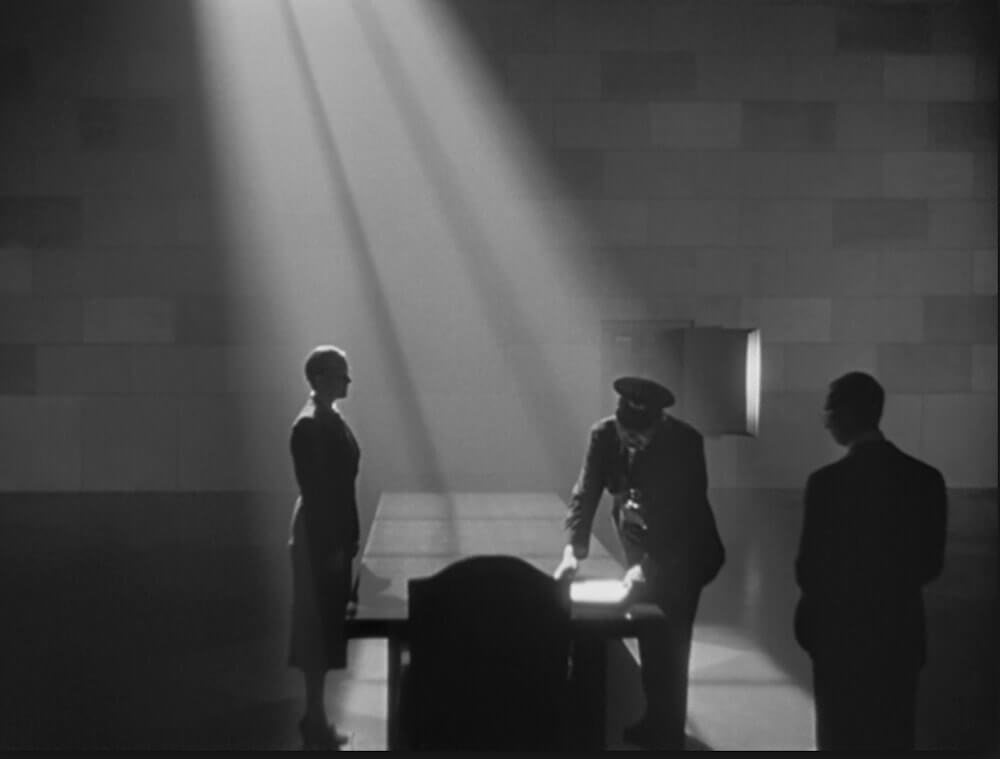


DP Gregg Toland innovated and truly “changed the game” with light and shadow on Citizen Kane
A great early example of a DP and Director innovating together and serving the story is Citizen Kane.
DP Gregg Toland kept his depth of field, and used light and shadow to direct the eye, creating a more dramatic look. Without a focus on how to serve the story, such innovation would have been rendered meaningless.
Make notes in your script. Bring up visual suggestions, questions, and ideas. Have conversations about styles to emulate, other film’s this story reminds you of. The better you know the project the better you’ll be able to help serve it.
CINEMATOGRAPHY TECHNIQUE
Use the right gear for the job
Not every shoot will need a fully decked out Alexa package with cinema zooms. Sometimes a shoulder mounted ENG camera is exactly what a project needs.
Get familiar with ALL types of cameras and lenses. Not just the big ticket cinema stuff. Being precise about what you need is one of the most important cinematography techniques you'll develop.
Because if and when the director asks for something out of the ordinary you’ll need to be ready with not only suggestions, but also the requisite knowledge to implement them.
Knowing how to achieve the same end goals will make you favorite of producers as well. Which likely means more jobs.
CINEMATOGRAPHY TECHNIQUE
Perform camera tests
Learn how to do traditional camera tests with a chip chart, color chart, and human models, and then do them once you get your hands on the camera.
With proper testing, you can see exactly how the camera reacts before you get on set and determine a lot of lighting and shooting strategies beforehand. As opposed to on set where you’ll have a dozen people waiting for you to get to know the camera. You might have learned to do this in film school.
But we’re putting it here because we don’t want anyone to take it for granted. Sometimes certain basics fall by the wayside. This is one you should never let that happen to.
FOR THE BEST CINEMATOGRAPHY, BE SURE TO TEST:
- Different camera settings (ISO, working stop, LUTs, color spaces, etc)
- Filters
- Lighting choices (color temps, diffusion, direction, brightness)
CINEMATOGRAPHY TECHNIQUE
Make a shot list
You’ll want to make a shot list right after a tech scout to determine what lenses you need. A well organized shot list is going to be one of your best tools on set.
In StudioBinder, you can create a new shot list. From there you can spin off new shots, group and sort your shots by type.
You can even add pictures from your scout directly into the app, which will create a storyboard you can show your director.
How to Create a Shot List with StudioBinder
You can also quickly add and organize shots on the go.
Many other cinematography techniques are dependent on your ability to understand and utilize tools like this first!
As a shot list example, take a look at how lifestyle and adventure filmmaker Matt Komo planned out a 24-hour film production using StudioBinder's shot list feature.
How to Plan Your Shot List
CINEMATOGRAPHY TECHNIQUE
Location, location, location
We mentioned John Ford before, but another thing he helped institute was shooting on location for maximum visual impact.
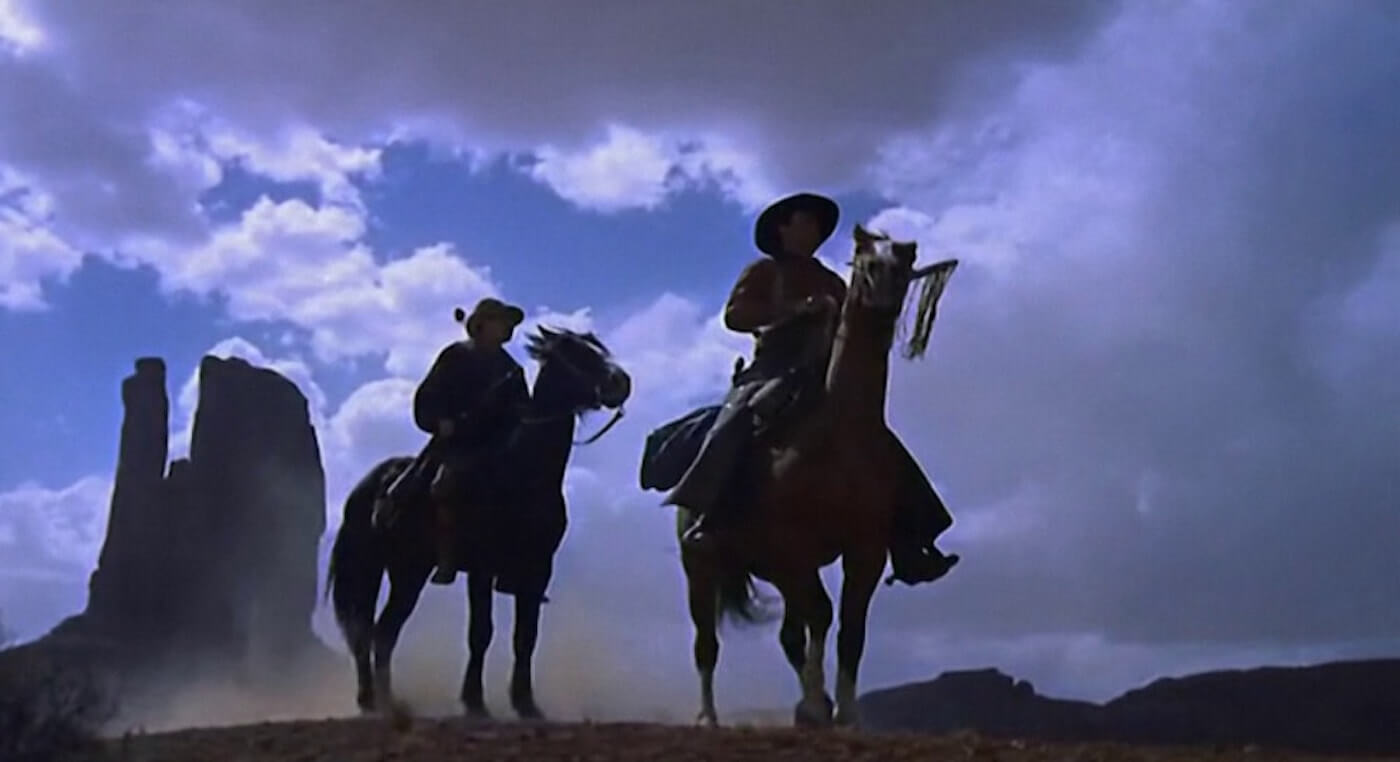


Ford's cinematic technique: Shoot epic locations like Monument Valley
Ford shot countless westerns in Arizona’s stunning natural landscape of monument valley.
He knew the location well, and the towering red rocks helped him frame his shots perfectly.
Find good locations. Understand what the light will look like there at different times of the year, or day (more on that later).
The better your locations, the better your look with potentially less work from you and your crew.
CINEMATOGRAPHY TECHNIQUE
Never say "fix it in post"
Well, you can say it. Sometimes it’s fun to say.
Just try not to depend on it.
The best cinematography typically comes from your locations and lighting and not with DaVinci Resolve. Post production software will not be listed amongst our cinematography techniques.
Plus, whatever you can’t capture naturally on-set, might takes way more time and money to recreate in post.
The best way to make sure to get the best look the first time around? Give yourself TIME to create it.
That’ll mean planning the shoot carefully, and committing to your game plan on set. If you don’t think you’ll have time, use screenshots from existing films and tv shows and create a storyboard or moodboard in StudioBinder and share it with your team as a previz.
If it looks good here, chances are it’ll work for you on set.
Turn Your Shot List into Storyboards in StudioBinder
Ford shot countless westerns in Arizona’s stunning natural landscape of monument valley.
He knew the location well, and the towering red rocks helped him frame his shots perfectly.
Find good locations. Understand what the light will look like there at different times of the year, or day (more on that later).
The better your locations, the better your look with potentially less work from you and your crew.
CINEMATOGRAPHY TECHNIQUE
Never say "fix it in post"
Well, you can say it. Sometimes it’s fun to say.
Just try not to depend on it.
The best cinematography typically comes from your locations and lighting and not with DaVinci Resolve. Post production software will not be listed amongst our cinematography techniques.
Plus, whatever you can’t capture naturally on-set, might takes way more time and money to recreate in post.
The best way to make sure to get the best look the first time around? Give yourself TIME to create it.
That’ll mean planning the shoot carefully, and committing to your game plan on set. If you don’t think you’ll have time, use screenshots from existing films and tv shows and create a storyboard or moodboard in StudioBinder and share it with your team as a previz.
If it looks good here, chances are it’ll work for you on set.
FREE DOWNLOADABLE BONUS
Download FREE Cinematography Techniques Cheatsheet
This article took 30 hours to write. Thirty! Needless to say, there was a LOT we couldn’t include in the post. Download our FREE, printable cheatsheet PDF to get access to over 30+ cinematography tips (includes bonus content not in the post).

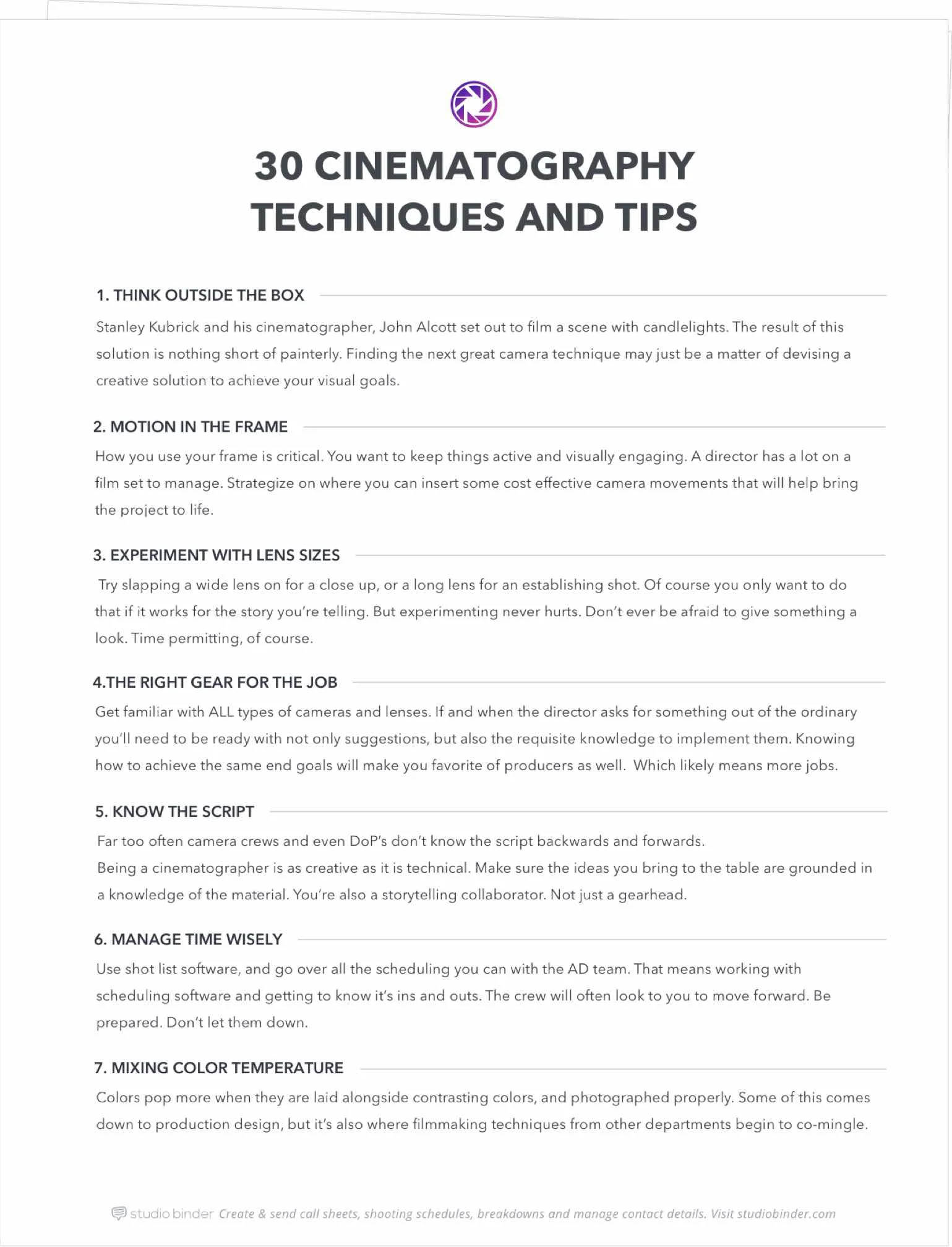

4
ON SET LEADERSHIP
HOW TO LEAD A TEAM EFFECTIVELY
CINEMATOGRAPHY TIP
Prepare to do it all
You probably left film school with certain ideas about what a cinematographer's role on set was.
Surprise!
It won’t always be that way.
On some jobs you’ll have to serve as your own gaffer. And electric. And grip. And… production designer.
The list could go on.
You should have a working knowledge of every role on a set.
This isn’t just in case you have to fill in. It’s also so you can understand and respect the process of everyone else’s work.
Knowing how long to give hair and make-up is important. Knowing that you need to allow for them to have “last looks” before you roll can also come in handy.
The set needs to flow, which means you need to be in sync with everyone else. It’s ideal not to act as though you are an island.
So get to know the whole process.
And be ready to fill in…
You probably left film school with certain ideas about what a cinematographer's role on set was.
Surprise!
It won’t always be that way.
On some jobs you’ll have to serve as your own gaffer. And electric. And grip. And… production designer.
The list could go on.
You should have a working knowledge of every role on a set.
This isn’t just in case you have to fill in. It’s also so you can understand and respect the process of everyone else’s work.
Knowing how long to give hair and make-up is important. Knowing that you need to allow for them to have “last looks” before you roll can also come in handy.
The set needs to flow, which means you need to be in sync with everyone else. It’s ideal not to act as though you are an island.
So get to know the whole process.
And be ready to fill in…
CINEMATOGRAPHY TIP
Develop (and follow) a workflow
As cinematographer Art Adams puts it: “Block. Light. Rehearse. Tweak. Shoot. Repeat. Every. Single. Setup.”
It really is that important. If you can’t light the actors, use stand-ins.
Make sure they’re at least same height and approximate skin tone. All the film lighting techniques in the world can’t light someone who isn’t there.
A key part of this is communicating that this will be necessary to the director, 1st AD, and the actors. Everyone wants to work with you, but no one likes be surprised.
If you keep a consistent workflow then you become easier to predict. Your team knows what to start doing when.
Suddenly the production starts to hum along.
This is a good thing.
CINEMATOGRAPHY TIP
Lead your crew
Some of the most important filmmaking tips aren’t actually camera techniques or film lighting tricks, but people skills.
Crews respect clear, fast decision making.
Be aware of how much work you’re creating for them. They’re probably happy to do the work but will become unhappy if they find themselves being told to take down a light and then they have to put it right back 15 minutes later.
So be clear and respectful. Take the blame for mistakes. Be a responsible leader.
Efficient cinematographers are the best cinematographers in the crew’s eyes. Because it means good cinematography, fast setups, and finishing on time.
Keep track of who you’ve worked with in your crew, and who you’ve worked for in production in a crew database like in StudioBinder.
You don’t want to lose track of anyone, or forget them.
You never know who you might need on a job, or who the next job might come from.
Utilizing and managing your team are both good cinematography techniques.
CINEMATOGRAPHY TIP
Hire the right team and listen
Remember how we mentioned that huge crew?
And how you’re in charge of them?
Well, keep in mind that starting out you may not be the most experienced person on set.
In fact the most experienced person may be working for you, with years of camera experience and film lighting techniques under their belts.
Your gaffer and key grip in particular are both highly trained creative individuals. Use them to help solve problems. You don’t have to figure everything out on your own.
Check your ego at the door.
This is a pretty good policy no matter what you are doing. Ego’s only ever get in the way.
CINEMATOGRAPHY TIP
Don't argue in public
Try not to argue.
Disagreements happen all the time. The first thing you should try and do is see where the other person might be right.
After you’ve done that and there is still a fundamental ‘misunderstanding’...
I’d ask for a sidebar. Take a moment to cool down, and discuss away from everyone else. Then talk it out.
Because no one ever looks good calling people out in public. Even if you are right.
Also doing the whole “Can I talk to you alone for a second” might as well be arguing on set.
So find a tactful peaceful time and place to approach this talk.
This is especially true if it’s cinematographer vs. director.
Directors can get defensive if challenged in front of people, because they look like they’re not in charge. Talking privately eliminates that fear of embarrassment.
Remember what we said about egos? Check them at the door.
At the same time, recognize that not everyone else will be doing that. So be careful of egos.
They are FRAGILE.
A film crew on a set is like an army going into battle. Remember who the enemy is. It’s not the men and women you are in the trenches with.
Keep morale high, fight for the same things. Approach disagreements as though you want to same end result and just see different paths. Work together to find the right path.
This sort of approach will keep your set functioning well. It’ll keep you working.
It’ll keep you sane.
Before you get to set, have some go-to strategies for working with difficult crew. Of all the cinematography techniques in this post, that one might serve you the most.
5
CAMERA TECHNIQUES
WORKING WITH THE CAMERA
CAMERA TECHNIQUES
Keep the frame moving
How you use your frame is one of the most critical camera techniques. Whether it be moving that frame, or moving items within that frame. You want to keep things active and visually engaging.
A director has a lot on a film set to manage. Try identifying a way to get the camera moving during a rehearsal or blocking of a scene.
If production can afford it, talk with the director about where you could use a dolly, or a jib, or even a steadicam.
Strategize on where you can insert some cost effective camera movements that will help bring the project to life.
All this is to say, that you don't need to be Michael Bay and throw a bunch of unmotivated camera movement in your projects. Check out our video below to give you some great examples of motivated creative camera movements that'll take your cinematography to the next level.
Pro TIP
The video above is part of a free 5-part video series called Filmmaking Techniques. It's essential viewing for visual storytellers.
CAMERA TECHNIQUE
Get creative with lenses
You don’t ALWAYS need a 21mm wide shot or an 85mm close up. Slapping a wide lens on for a close up, or a long lens for an establishing shot are creative cinematography techniques that intrigue viewers.
Of course you only want to do that if it works for the story you’re telling. But experimenting never hurt.
Sometimes the thing you ‘tried for fun’ can send you in a creative new direction. Don’t be afraid to give something unorthodox a look. Time permitting, of course.
Speaking of unorthodox...
Looking for creative lens choices? Two words:
TERRENCE MALICK.
For more creative lens inspiration, make sure to check out our Mastering the Shot List video series on Youtube, where we take a closer look at the creative camera (and defining) lens choices by famous auteurs such as PT Anderson, Aronofksy, Tarantino, Tarkovsky, and others.
Creative lens choices can be important in creating a cinematic look, but planning this well in advance is more important.
Our video on The Lens Plot, popularized by Sidney Lumet's 'Making Movies' will help fast-track you.
What's Malick without his "creative" lens choices? Ep1 of Mastering the Shot List
CAMERA TECHNIQUE
Look through the frame
Even if you aren’t looking through a monitor, it’s vital that you look at your shoot through a frame of some kind. Whether it’s an old-school director’s viewfinder, a mobile phone camera, or just your fingers.
This frame is what the audience will ultimately see, and you have to be able to picture what’s going into it. Any device that helps train your eye to think of the world in terms of the frame will make you a better cinematographer..
CAMERA TECHNIQUE
Bring a quality camera to tech scouts
Bringing a still camera on location scouts is so important, we hesitate to even refer to it as one of our cinematography techniques. But it does merit some further consideration.
When all else fails, you can use your phone, but ideally you want a DSLR with the same size sensor as your shooting camera. Most 35mm equivalent cinema cameras have an APS-C (or close to) sensor.
You should also bring a zoom that has the same approximate focal range as the lenses you’ll be shooting on. You can test out different focal lengths and find exact camera positions.
CAMERA TECHNIQUE
Find ways to add depth
You probably already know that all depth in film is, essentially, an illusion. You’re tricking the eye into believing that a flat picture has a third dimension it really doesn’t have.
So how do you really use that in terms of story?
In The Graduate, Ben runs towards a telephoto lens...
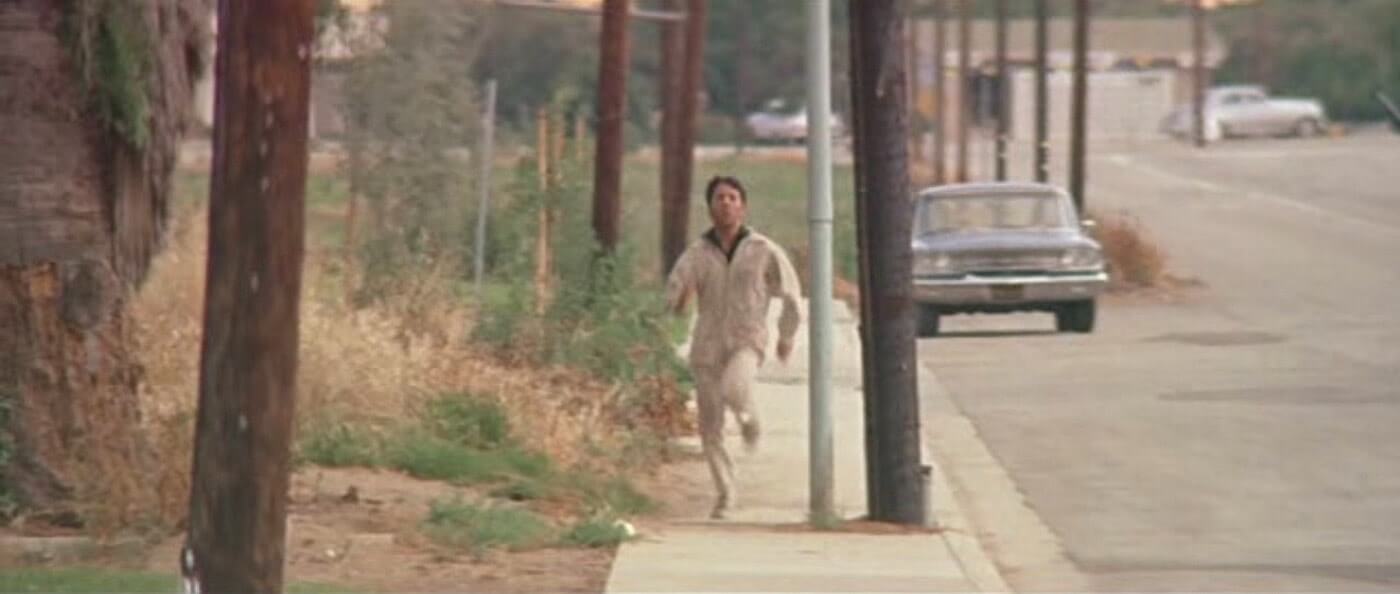


It gives the impression he’s getting nowhere
Here's a more thorough breakdown of how Mike Nichols directed the ending of The Graduate. Nichols uses a number techniques to craft a thrilling finale that we're still studying today.
How Mike Nichols Directed The Graduate • Subscribe on YouTube
There are many ways you can add depth, and moving beyond one trick is essential if you want to move to the next level of cinematography techniques. Here are 5 ways you can add depth to your shots.
CAMERA TECHNIQUE
Choose a working stop
Changing stops shot to shot leads to depth of field inconsistencies, since lens sharpness changes at different stops.
Most lenses are sharpest at 2-2 ½ stops closed from wide open.
For every scene you should be able to choose a single exposure and stick to it for every angle. In some cases stick to a single stop for a whole sequence or the whole show.
Know the trade offs when you pick your stop. For example, shooting wide open almost always means less sharpness when the lens is in focus.
6
FILM LIGHTING TECHNIQUES
PAINT WITH LIGHT
FILM LIGHTING TECHNIQUE
Mix color temperatures
We’ve mentioned some classic black and white inspirations and cinematic techniques, but what about the standard today (for the last 60 years): color!
Try using colors to create the same kind of dramatic contrasts and juxtapositions. Enter film lighting color gels:
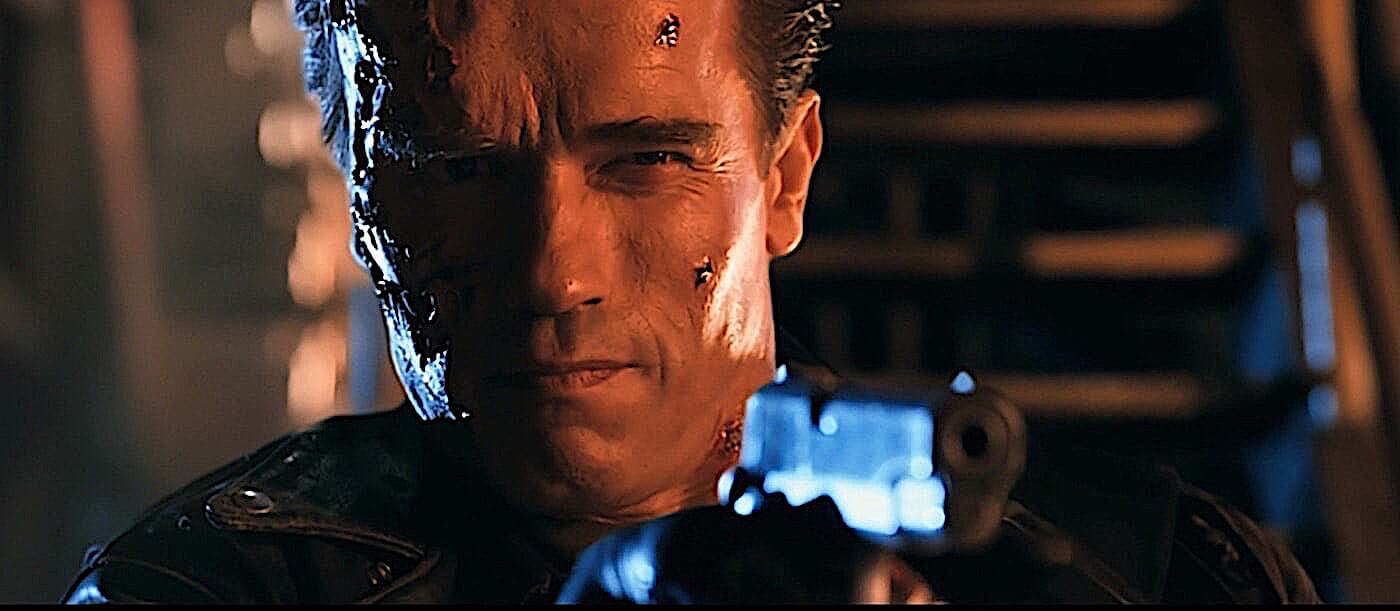


Mixing discordant colors can be a dramatic and effective cinematic technique
Suddenly the image catches the eye in a different manner than before. Similar to the way more classical cinematic techniques leveraged bright outlines and shadows when shooting black and white.
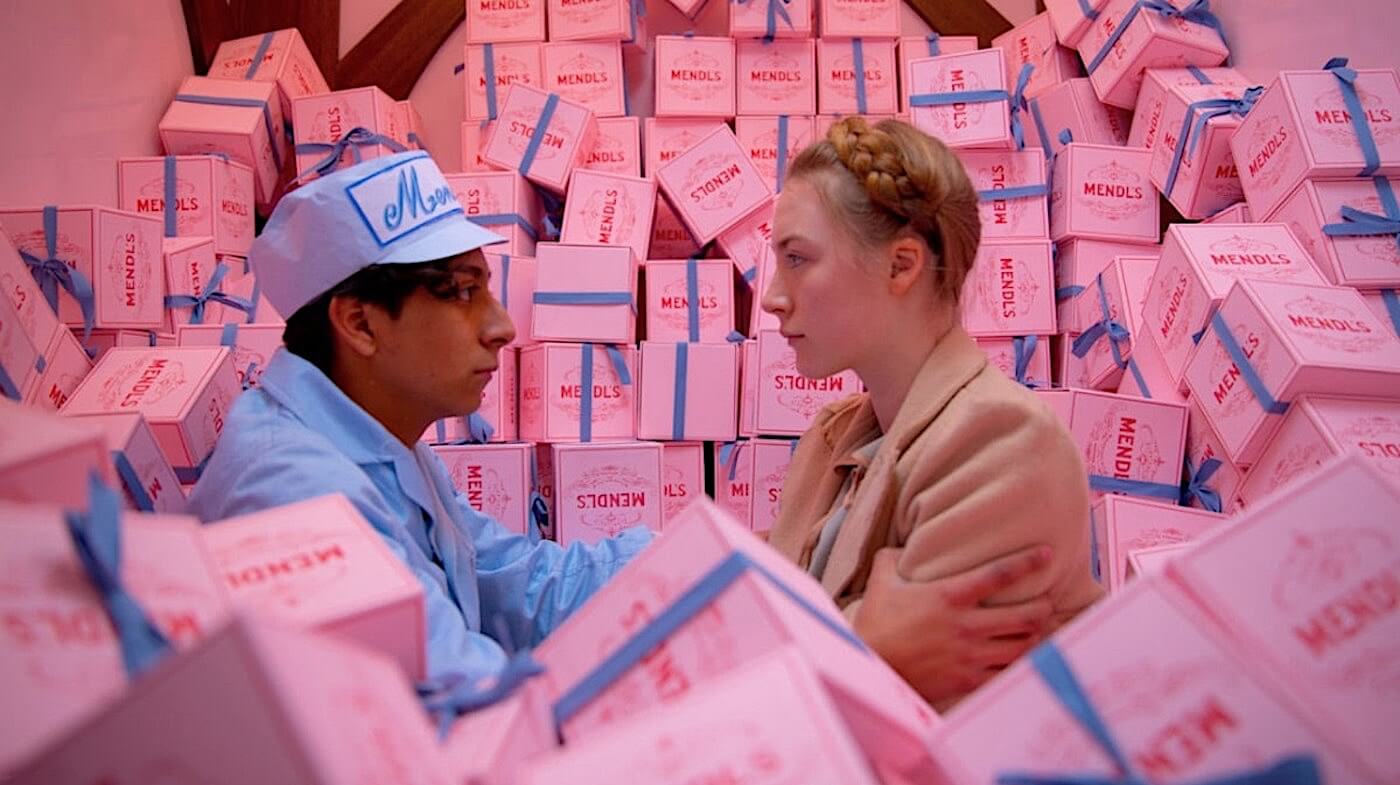


Wes Anderson preferred camera technique: color and center-staging
Colors pop more when they are laid alongside contrasting colors, and photographed properly.
Some of this comes down to production design, but it’s also where cinematic film techniques from different departments start to co-mingle.
When it comes to identifying the right colors, having an understanding of color theory is critical. The video below will walk you through the principles, and it's part of a free 5-part video series called Filmmaking Techniques.
It's essential viewing for visual storytellers.
Understanding Color Theory in Film
FILM LIGHTING TECHNIQUE
Hard light versus soft light
Hard and soft lighting techniques create very different feelings. Try experimenting with both to get a sense of what you like for what types of scenes.
A lot of people are using LED panels nowadays but it nearly eliminates all hard light (which may not be the preference). Use fresnel and pars when appropriate.
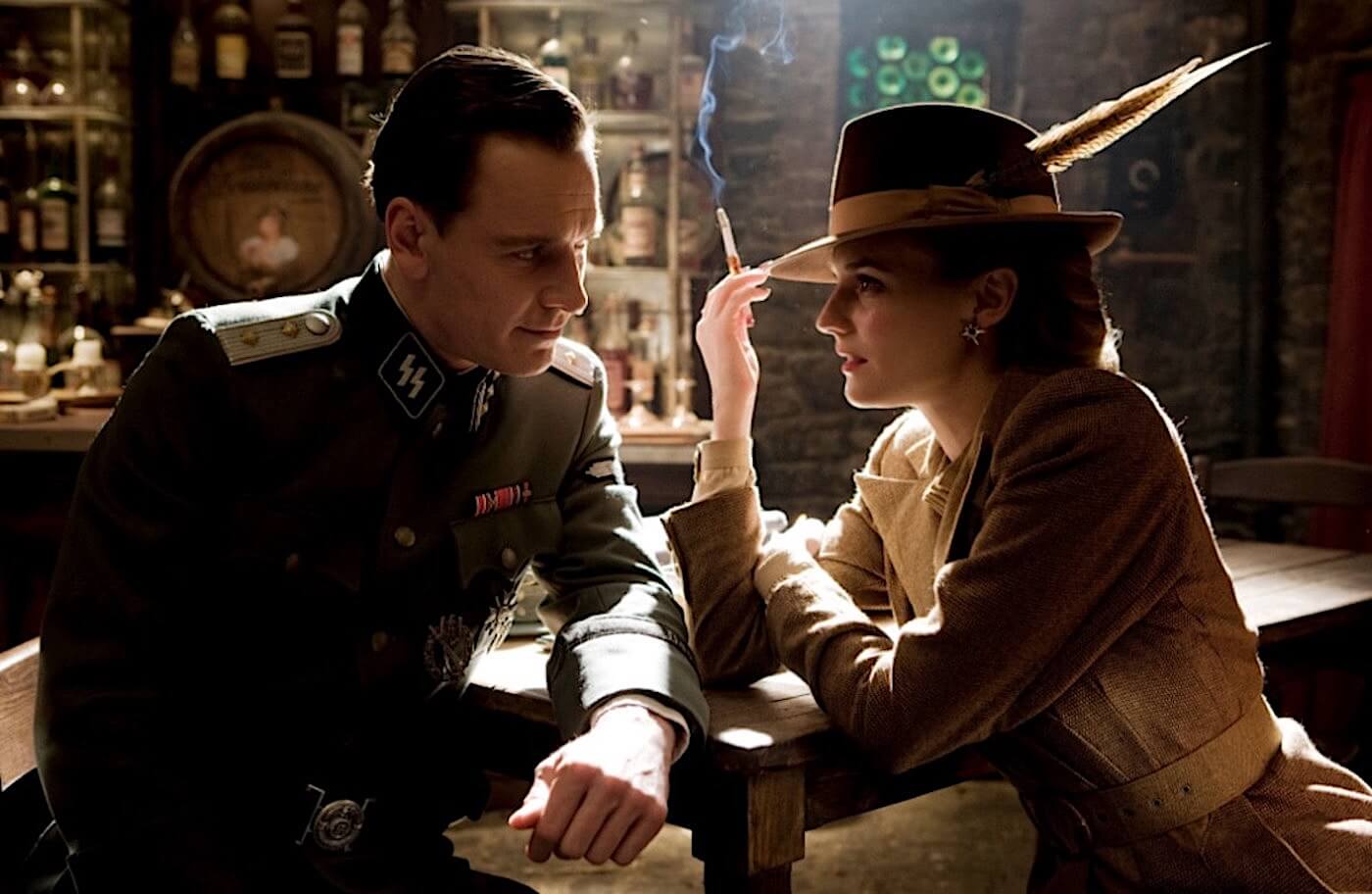


Hard lighting would definitely qualify as a sexy cinematic technique
Hard light is way easier to control than soft light. Hard lights can be softened, but soft lights can’t be hardened. If you really need to control shadows and keep light from spilling everywhere a fresnel will make your life easier than a kino.
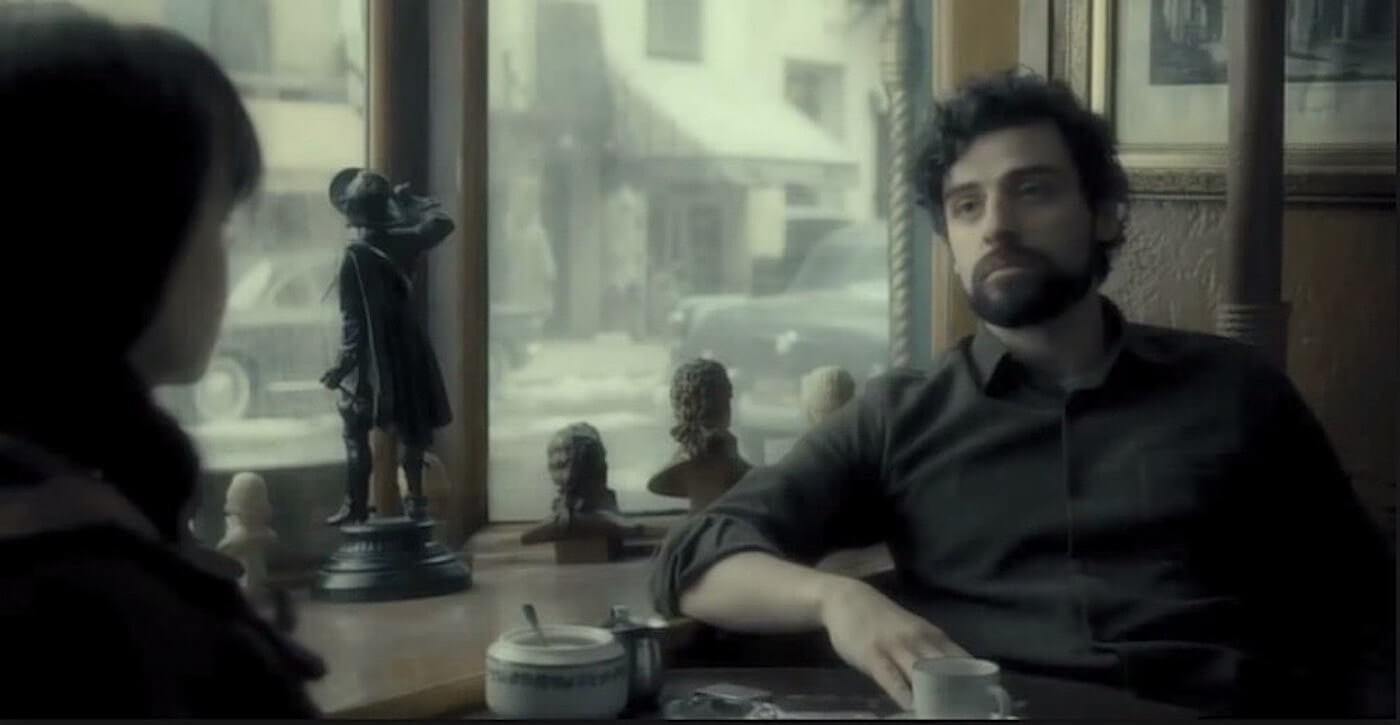


Much softer lighting used here by the Coen Bros
You don’t need to always opt for what looks sexiest, of course. Remember one of our other cinematography techniques: telling a good story. One way to get that cinematic look with lighting techniques is to embrace the power of the fill light. This video pays homage to that secondary but highly-important light.
Fill Lighting Explained • Subscribe on YouTube
We've covered many topics on what cinematographers do but let's switch gears to talk about how you go about actually working as a cinematographer. From finding jobs to buying vs. renting gear — if you're interested in becoming a working DP, read on.
7
FINDING WORK
GETTING JOBS (AND KEEPING THEM)
CINEMATOGRAPHY TECHNIQUE
Don't go into debt for gear
This is a good guideline in general. Going into debt is never ideal.
So when should you buy gear? Brent Barbano, cofounder of ShareGrid, can help you figure out when it makes more sense to buy or rent gear.
Pro & cons on renting vs. buying gear
When it comes to camera gear there can be a tendency to try and make yourself and your work more appealing by owning all the cool toys.
Yes, it might help when packaging your services, but at some point it’s not worth creating a mountain of debt over it. If you want to invest in one camera, say, and you think you can make the cost back in a few jobs, sure.
But invest carefully. Know that your quality of work, and how it is to work with you, will factor in more than how much gear you own.
The dirty little secret?
Once producers know you own some cool gear, they might hire you hoping to get it for free. Or at least heavily discounted. So after a while, your client incentive becomes a wash.
Producers. Gotta love ‘em, right?
CINEMATOGRAPHY TECHNIQUE
Reel > Camera Gear
Things break. Gear gets obsolete. Spending $100K on fancy camera equipment will not make jobs come to you.
You’re a cinematographer, not a rental house.
The best cinematographers can create the best cinematography from any camera they’re handed.
The job is to know how to evaluate the limitations and advantages of your gear, reach into your bag of filmmaking techniques, and make the best image under those conditions.
Equipment will come and go. Your expertise and skills on-set will only get better with time.
CINEMATOGRAPHY TECHNIQUE
Know when to end your reel
This is more of a job hunt technique than a film technique.
Nevertheless, remember that people have short attention spans.
VERY short attention spans.
So when designing a reel to send out to jobs or post on crew job sites like ProductionBeast, keep it short. Many directors and producers will decide to turn it off in the first 30 seconds.
Don’t take it personally. They have tons of these to watch.
Use that knowledge as a tool to create a better reel. Grab them with your best stuff first.
And then get out fast.
So even if you’re one of the best cinematographers in the world, you’re looking at 2:30 max.
Also don’t pad your reel. Shorter and higher quality is better than a few more shots, some of which aren’t the best.
CINEMATOGRAPHY TECHNIQUE
Stay on top of new tech (also drones)
Technology marches on. There will be no shortage of new toys to play with. Research them as best you can.
Know how and when to use them.
For example, aerial drones with cameras attached have gotten cheaper and cheaper, and fly-over shots that were once the providence of well-heeled studio productions are now yours.
But as amazing and EPIC as drone video footage can be, they do have their limitations. For example, did you know that most drone cameras currently don’t have zoom lenses?
CINEMATOGRAPHY TECHNIQUE
The best cinematographers...
Are equal parts artist, technician, and manager.
It’s a multi-faceted job, and no number of film techniques will make up for hard earned experience.
The more you work, and the more you practice, the more likely you are to formulate those well crafted shot lists that make the entire shoot a breeze.
We know we didn’t cover everything. Maybe we covered things you know and learned in film school.
Tell us in the comments below some some cinematography techniques YOU picked up in the field!
Oh, and in case you can't remember everything you read above, download our convenient, Cinematography Techniques Cheatsheet PDF below, so you can print and take it with you when you're on the move (or at least until all of these points become second nature).
Until then, break a lens!
UP NEXT
What is Cinematography
Now that you've learned some essential cinematography techniques, it's take to learn the fundamentals of cinematography.
Up Next: What is Cinematography →
Showcase your vision with elegant shot lists and storyboards.
Create robust and customizable shot lists. Upload images to make storyboards and slideshows.
